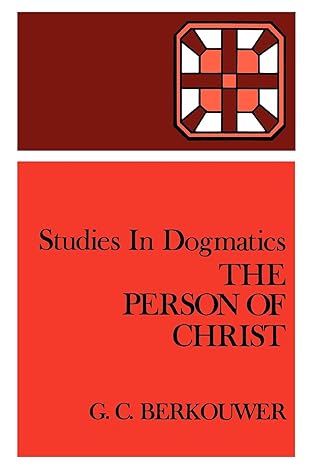A Brief Book Summary from Books At a Glance
by Steve West
Table of Contents
1 Introduction
2 The Crisis in the Doctrine of the Two Natures
3 Ecumenical Decisions
4 The Reformed Confessions
5 Chalcedon a Terminal Point?
6 The Person and Work of Christ
7 Promise and Fulfillment
8 The Deity of Christ
9 The Humanity of Christ
10 The Sinlessness of Christ
11 The Unity of the Persons
12 The Impersonal Human Nature
13 Christ Incognito?
Summary
Chapter 1: Introduction
Kuyper astutely noted that heresies distort the true light by reflecting it through the prism of contemporary society and that modernism was incompatible with orthodox Christianity. This incompatibility has been recognized by many who are orthodox and also many who ascribe to modernism. The modern view of Christ is a rejection of biblical and creedal Christology. Since our view of Christ lies at the heart of our spiritual life and the life of the church, it is essential to understand him properly. It is also essential to always remember that if we know Christ truly, it is because of God’s gift of divine revelation to us. When people try to demythologize the gospel accounts, nothing is left of Christ that is worthy of worship, and motivation and honesty in missions fade away. Christ is Lord and Savior, and when the church is asked about him we must be prepared to give a clear and defensible answer.
Chapter 2: The Crisis in the Doctrine of the Two Natures
The doctrine of the two natures of Christ has always been attacked, and today the attack is carried out with critical zeal. In the nineteenth century, rationalists dismissed orthodox Christology, and the Socinian rejection of the hypostatic union, the Trinity, and substitutionary atonement grew in popularity. Schleiermacher, Ritschl, and Harnack vigorously contended against orthodox Christology, arguing with different nuances that it was impossible for one person to be fully God and fully man. The possibility of two wills was rejected. In the nineteenth century, the new Christological view of kenosis arose, which did not completely reject the two natures view, but modified it away from orthodoxy and into categories more attuned to modern thought. Christ was said to either have laid aside relative divine attributes, or fully transmuted from God to a man. The liberal quests for discovering the truth of the historical Jesus—who was not a divine being, and of whom the gospel witnesses are unreliable—tried to discover how the man Jesus of Nazareth was turned into the church’s very different Christ of faith. We can allegedly see how the church preached Christ, but we cannot get past the gospel documents to the Jesus of history. Bultmann tried to remove the mythological form from the kerygma of faith, insisting that the gospel message is one of faith rather than historical fact. The modernist rejection of orthodox Christology is usually tied to either speculative philosophical presuppositions or an acceptance of a naturalistic scientific worldview. The Reformed church in the Netherlands has been increasingly influenced by novel Christological formulations of the modern kind. Nevertheless, many Dutch theologians—and others around the world—have provided staunch defenses of the creedal doctrine of the two natures, accepting the unity of the scriptural witness and refusing to divide history from witness. . . .
[To continue reading this summary, please see below....]The remainder of this article is premium content. Become a member to continue reading.
Already have an account? Sign In
Buy the books

THE PERSON OF CHRIST: STUDIES IN DOGMATICS, by G. C. Berkouwer